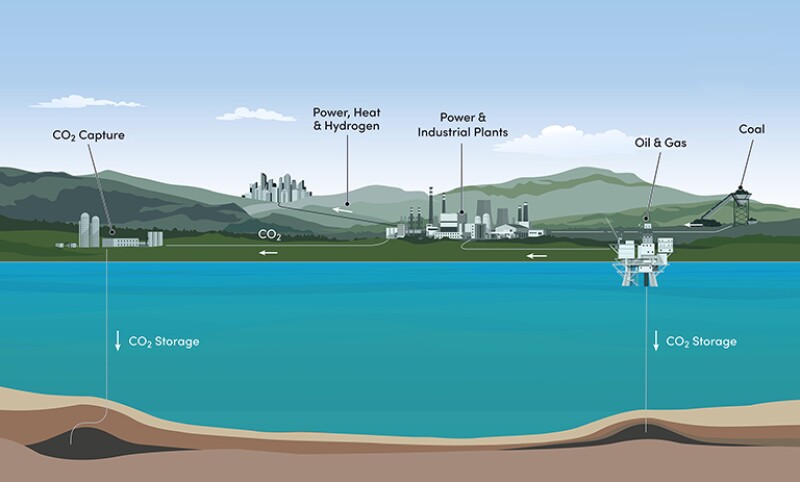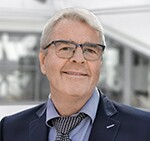Carbon capture and storage (CCS), with the potential for usage, will be crucial if the world is to prevent global warming. Modeling by the European Commission shows that the EU will need to capture, utilize, or store between 300 and 640 million tonnes of CO2 every year by 2050 if it wants to meet its climate-neutrality goal. It is therefore imperative that all industries, particularly the oil and gas sector, play their part to incentivize the development of new storage while enhancing the use of available producing facilities.
Speaking at the second CCUS Forum, held in October in Oslo, Norway, the EU’s energy chief Kadri Simson announced that captured emissions can be either stored or recycled into other industrial processes. Though it wasn’t directly stated by the Estonian politician, enhanced oil recovery (EOR) via CO2 injection should be considered as a viable option to both store and reduce emissions. It is important to emphasize that the amount of stored CO2, as a function of EOR, will be greater than CO2 emissions created from oil extraction.
CO2 for EOR in US and Canada
Since the 1970s, this has been a routine procedure in many US and Canadian projects with mature reservoirs and is usually instigated after the effect of injected produced water has worn off. It has been achieved without government support.
While Norway has been injecting captured CO2 in saline aquifers since the mid-1990s, there has been no attempt, and no plans exist, in Europe to use CO2 for EOR.
Why not?
Balancing increasing energy demand while lowering greenhouse gas (GHG) emissions is one of the greatest conundrums facing the industry today: global consumption is currently around 100 million B/D.
According to IEA’s 2022 World Energy Outlook, there are three scenarios. The APS (announced pledges scenario) assumes fossil-fuel demand will peak in 2024 with 98.1 million B/D. The STEPS (stated policies scenario) projection is peak demand in 2035 at 103.2 million B/D, before going into steady long‑term decline (Fig. 1). If the NZE (net zero emissions) scenario comes to pass, oil demand never returns to its 2019 level. It foresees demand falling by 2.5% each year on average between 2021 and 2030, and by just under 6% each year from 2030 to 2050.

Adopting EOR technologies and upscaling CCS infrastructure could be the answer to meet energy demand and lower emissions before green energy claims the forecast largest stake of the energy mix by mid-century.
Exploiting Hydrocarbon’s Heritage and CCS
Globally, there are 30 CCS projects in operation, 11 are under construction, and 153 are in development. Sixty-one new facilities were added to the project pipeline in 2022. The CO2 capture capacity of all CCS facilities has grown to 244 mtpa, a rise of 44% over the past 12 months (Global CCS Institute 2022).
A positive legacy of oil and gas toward impactful climate change is the use of its ingenuity and experience to convert deep, largely empty offshore reservoirs as safe and secure sanctums for CO2.
AGR is part of the LINCCS (Linking Carbon Capture and Storage) research project which is committed to solving storage capacity challenges in the Norwegian North Sea. Backed by The Research Council of Norway, the aim of the LINCCS consortium is to develop next-generation CCS solutions ready for demonstration by the end of 2024, with full-scale commercial projects expected to be finalized by 2027.
The project’s multidisciplinary teams will deliver support and advice on geoscience, reservoir and drilling engineering, storage monitoring, facilities, and cost engineering to create an “atlas” of the design and redesign possibilities across different scenarios.
It’s a win-win solution for the sector eager to shrink its carbon footprint and seek more efficient and economical environmental prospects. As operators are looking for ways to reduce their own emissions, offshore CCS is emerging as a competitive alternative. The shift is underway with the industry taking a solid step-by-step approach to adapt operations and adopt innovation.
Norway’s Longskip (Langskip) project is a prime example. From two emission points in eastern Norway—HeidelbergCement in Brevik and Hafslund Oslo Celsio waste-to-heat plant—a total of 0.8 tonnes of liquid CO2 will be captured annually for transport to Øygarden to its end destination in a subsea sandstone aquifer 2000 m under the North Sea seabed. The Northern Lights (the CO2 transport and storage part of the Longskip project), which welcomed its first commercial customer, a Dutch factory for ammonia and fertilizer, in August 2022, could eventually have capacity to store more than 5 mtpa of CO2.
As the need for storage space will become far greater, the cost per carbon tonne must be brought down to a completely different level. A mega CO2 store for gigatonne (thousand million tonnes) volumes of CO2 will require far greater investments and government support than the Longskip project at $2.8 billion; the Norwegian state expects to cover $1.8 billion of this.
Using CO2 for EOR alongside CCS will not only make a positive contribution to the climate account; it can overhaul the future of the oil and gas sector. Extending the recovery and lifetime of depleting fields—with minimal impact on the environment and climate—may reduce the need for exploration and may avoid developing in the most controversial areas.

Researching Possibilities for EOR With CO2
In a report on advanced extraction methods, the Norwegian Petroleum Directorate (NPD) stated that the remaining oil resources on the Norwegian Continental Shelf that are technically recoverable require advanced EOR methods to be fully exploited. The three-part study showed an average potential of 7% of oil initially in place in improved recovery and a permanent storage effect for CO2 in the reservoir of 70–100%. Several studies have been carried out by operators, with support from the NPD, which show encouraging results and potentially valuable opportunities to store CO2.
Following several comprehensive studies across 30 years involving 80 CO2 projects, the Norwegian University of Science and Technology has also shown that oil extraction can be increased between 6 to 8% (between 276 and 351 million Sm3) beyond the original volume (Energy Procedia 2017). In addition, researchers at SINTEF pointed to several areas and fields in the North Sea that would be suitable for this method of EOR. These include Ekofisk, Brage, Oseberg Sør, Troll, Gullfaks, Snorre, and Statfjord. In the Norwegian Sea, the Norne field is also a potential opportunity.
Why Not Enhanced Oil Recovery With CO2?
Despite the fact that the NPD, academia, and major oil companies have carried out studies that indicate increased recovery through the use of CO2, no decisions have been made either in Norway or in other European oil-producing countries to invest in the establishment of CO2 storage in combination with EOR.
Why not?
Mammoth investment in infrastructure will be required, which energy companies will not undertake without support from the authorities. This reticence is partly due to a perception of the risk associated with introducing CO2 into existing wells and facilities, but more importantly, the EU guidelines through the taxonomy for the phasing out of fossil energy. Also, the reputational risk is considered too high in relation to the economic potential of the EOR project.
Seizing the Carbon Prize
Next year, the European Commission will table a “strategic vision” for CCS and carbon usage technologies with the aim of clarifying rules and giving certainty to investors. New legal frameworks and funding streams are already bouncing off the back of a compelling sense of urgency.
As many oil fields are in the process of being depleted, time is of the essence as the conversion of existing infrastructure to function as EOR and CO2 storage will take several years to upscale. The window is now open to plan and implement increased extraction with CO2 and accelerate storage efforts. The oil and gas industry’s agility and transferable knowledge and skills has the potential to transform the energy transition and fast-track climate action.
The UN’s latest Emissions Gap Report states that GHG emissions must be cut by at least 30% to halt global temperature rises beyond the Paris Agreement goals of 2°C. It calls for an “urgent systemwide transformation.” There is, therefore, no time to waste to galvanize action for safer, more secure, and sustainable practices across the energy ecosystem.

Ole Gunnar Tveiten, SPE, is a geology advisor with AGR. With almost 40 years of industry experience, he has a deep knowledge of the geology of the North Sea. His track record in operational geology, pore pressure evaluation, and geomechanics covers advising some of the most historical discoveries and field development projects in the basin. Recently, he has been involved in tasks ranging from screening and characterizing prospective CO2 storage sites to risk assessment and certification of international CCS projects.

![JPT_2023-02_GuestEd_Essential-Features-of-the-CO2-EOR-Process[1].jpg](https://assets.spe.org/dims4/default/8d4f9cc/2147483647/strip/true/crop/879x527+0+0/resize/800x480!/quality/90/?url=http%3A%2F%2Fspe-brightspot.s3.us-east-2.amazonaws.com%2Fdf%2Fbd%2F1d2a3a144d61b40dbfee45355579%2Fjpt-2023-02-guested-essential-features-of-the-co2-eor-process1.jpg)